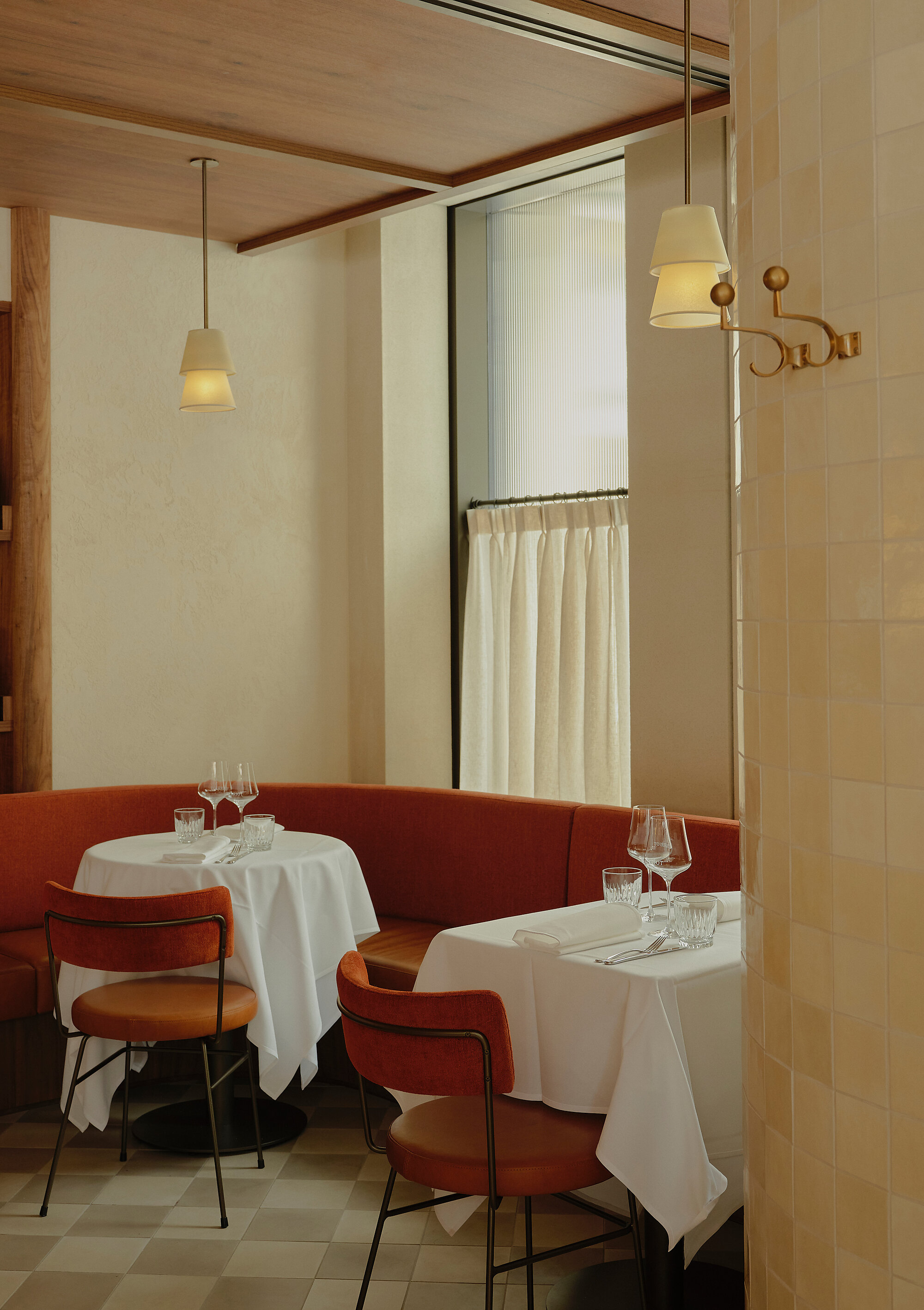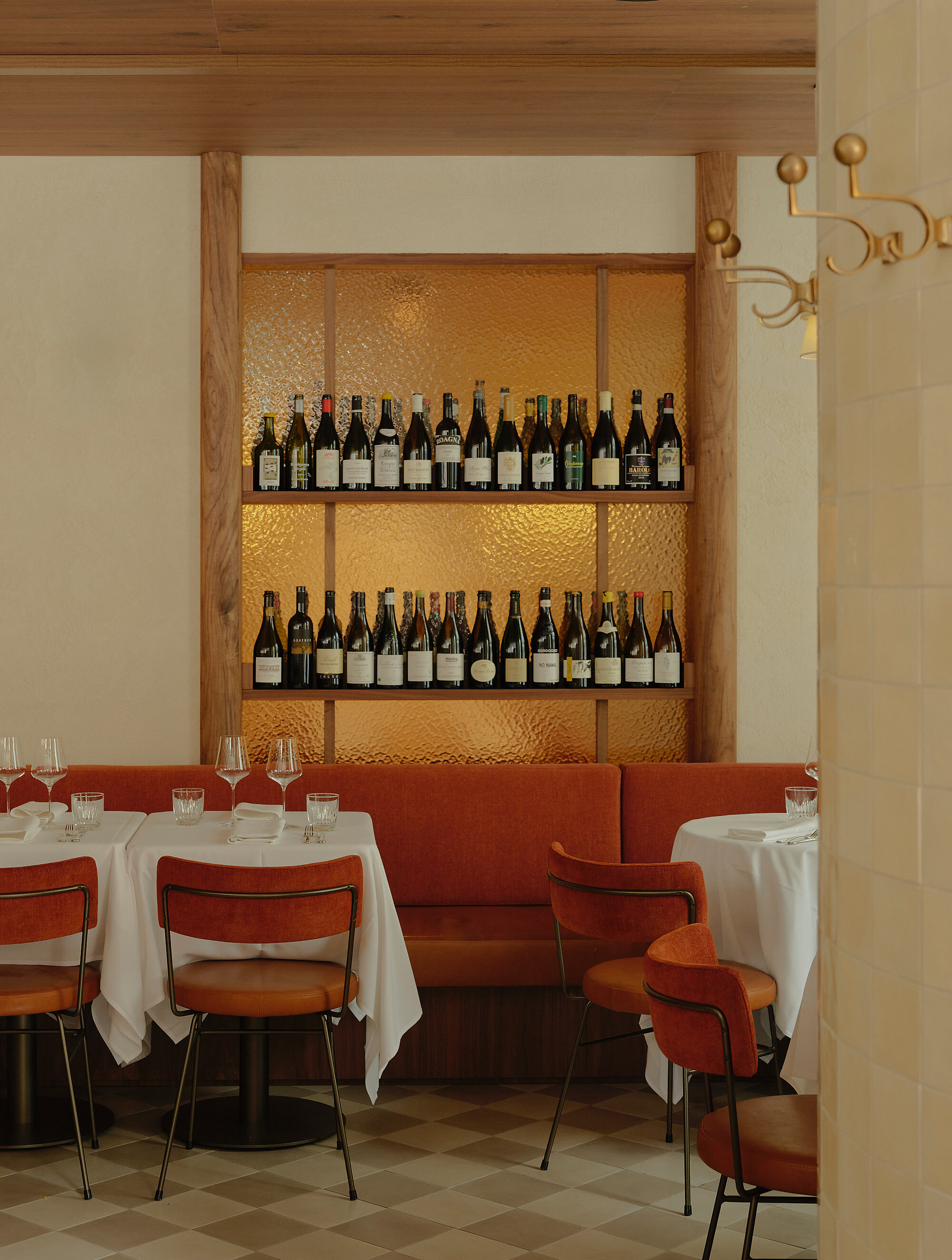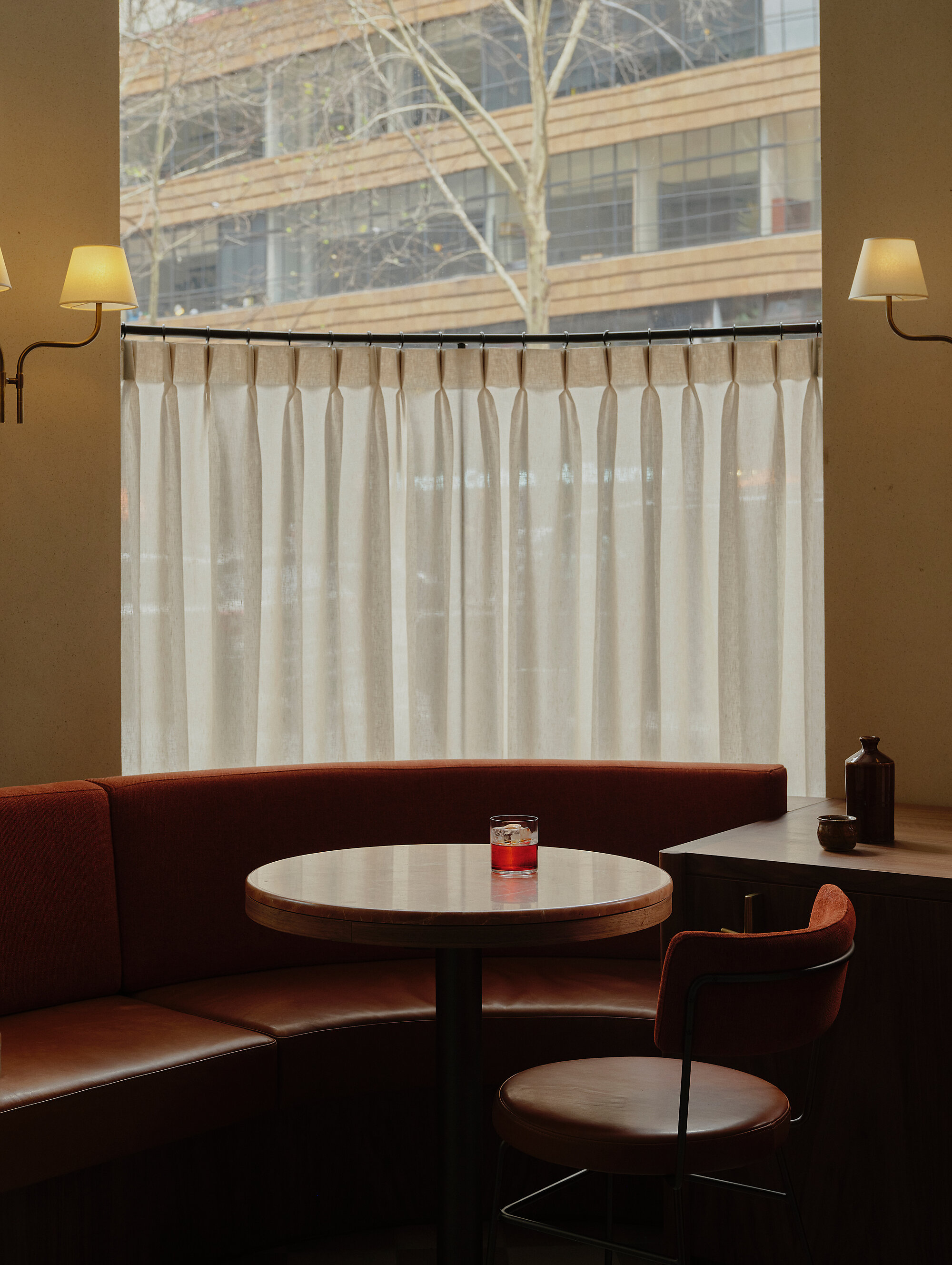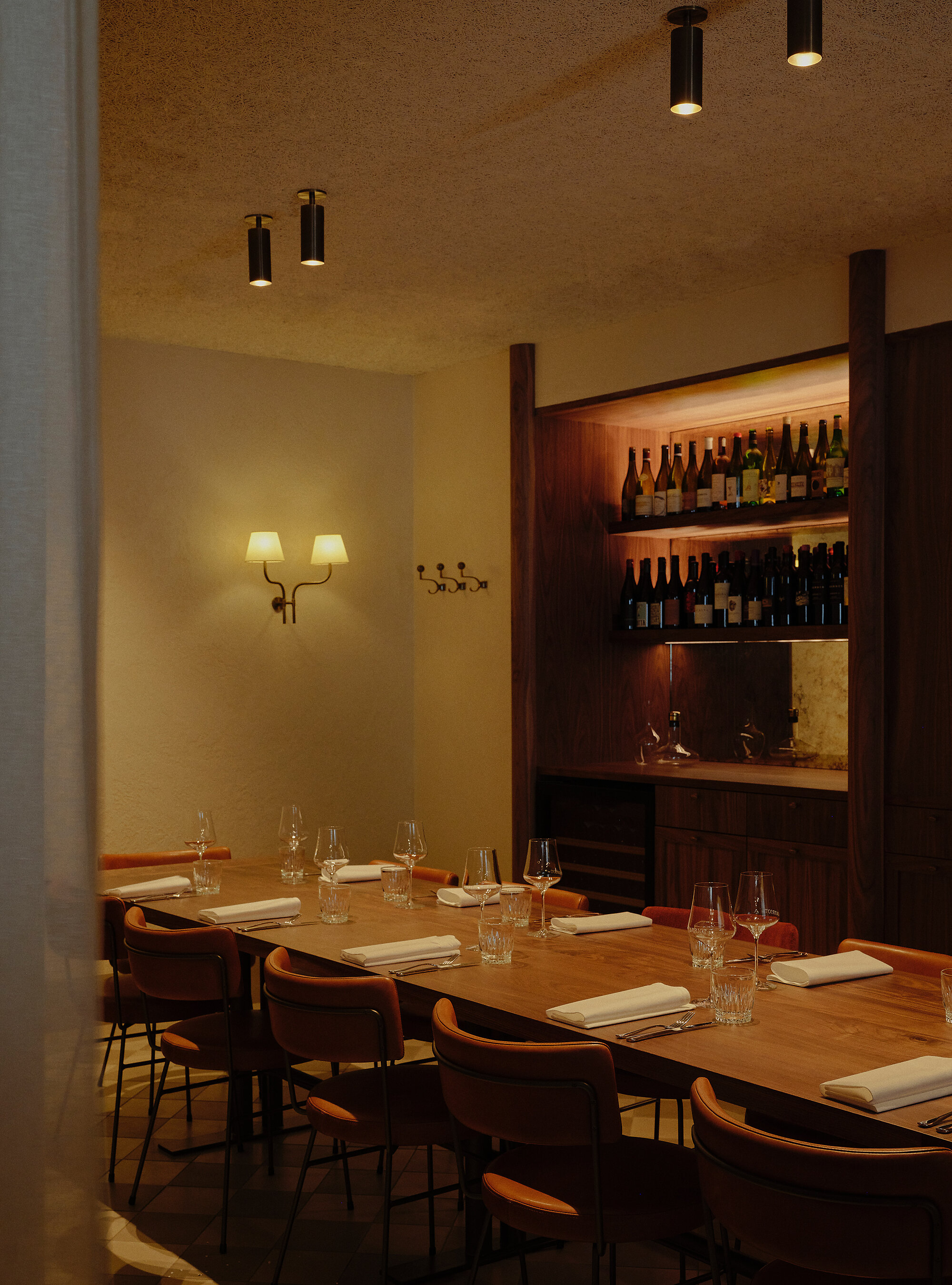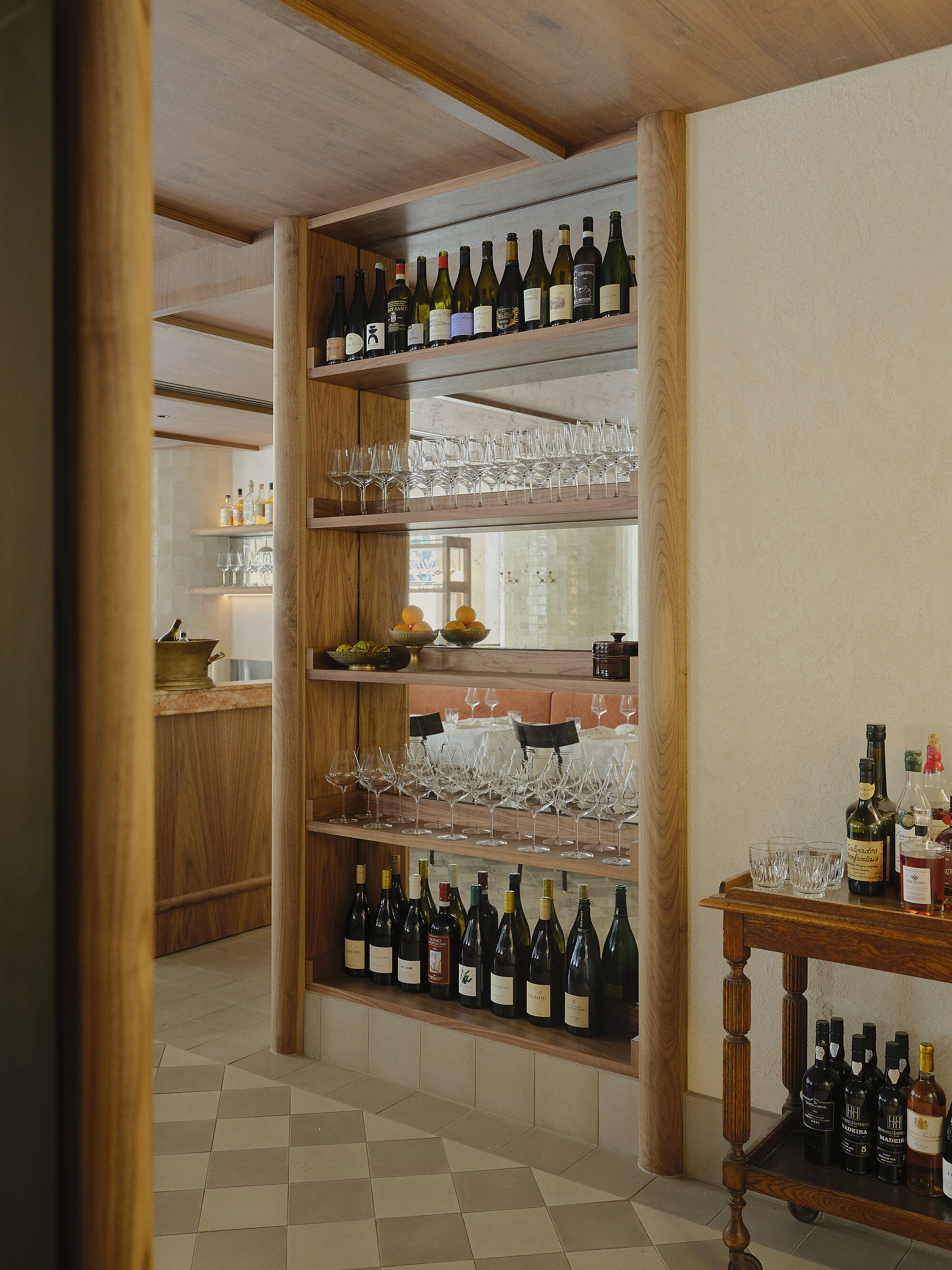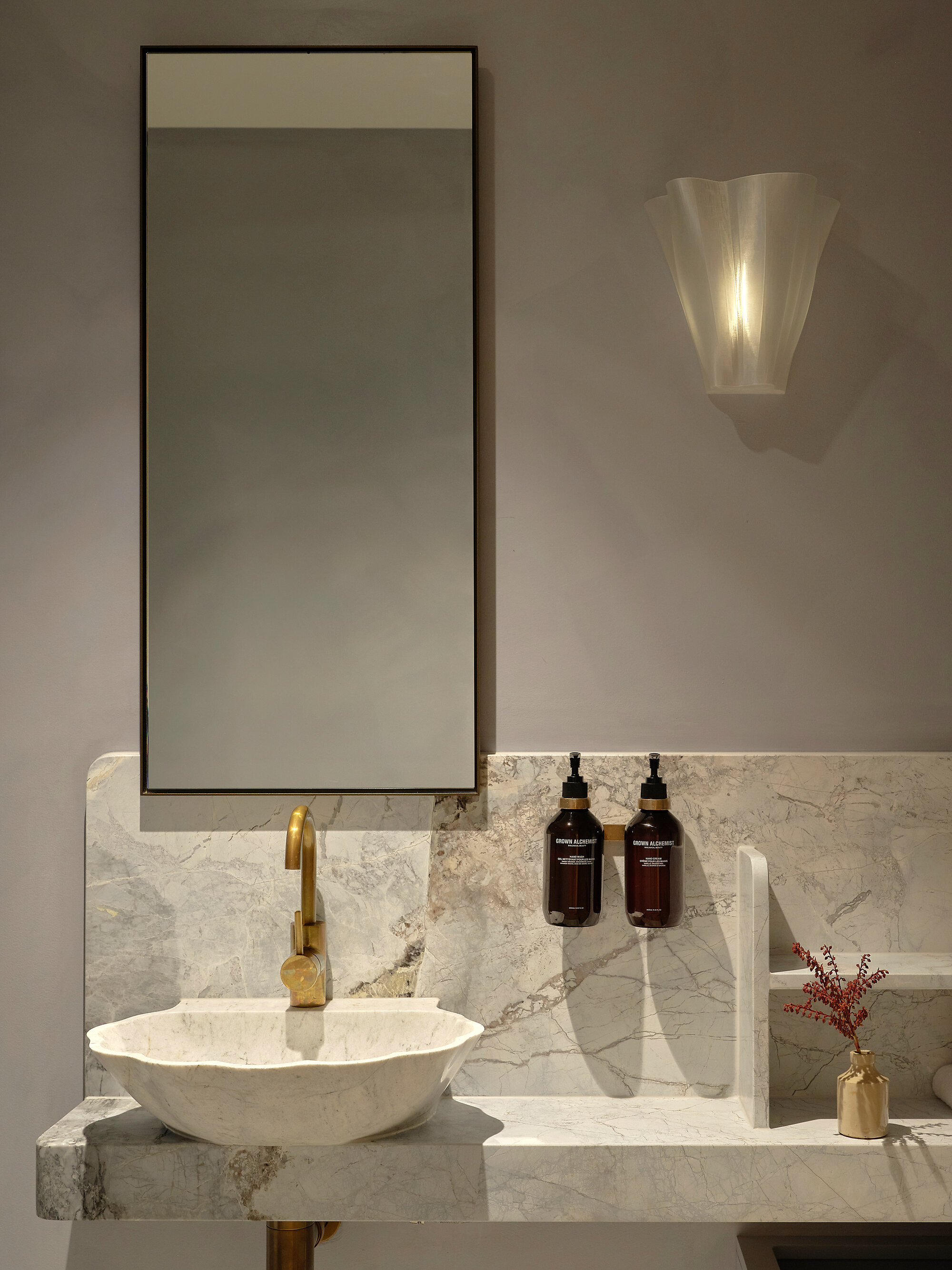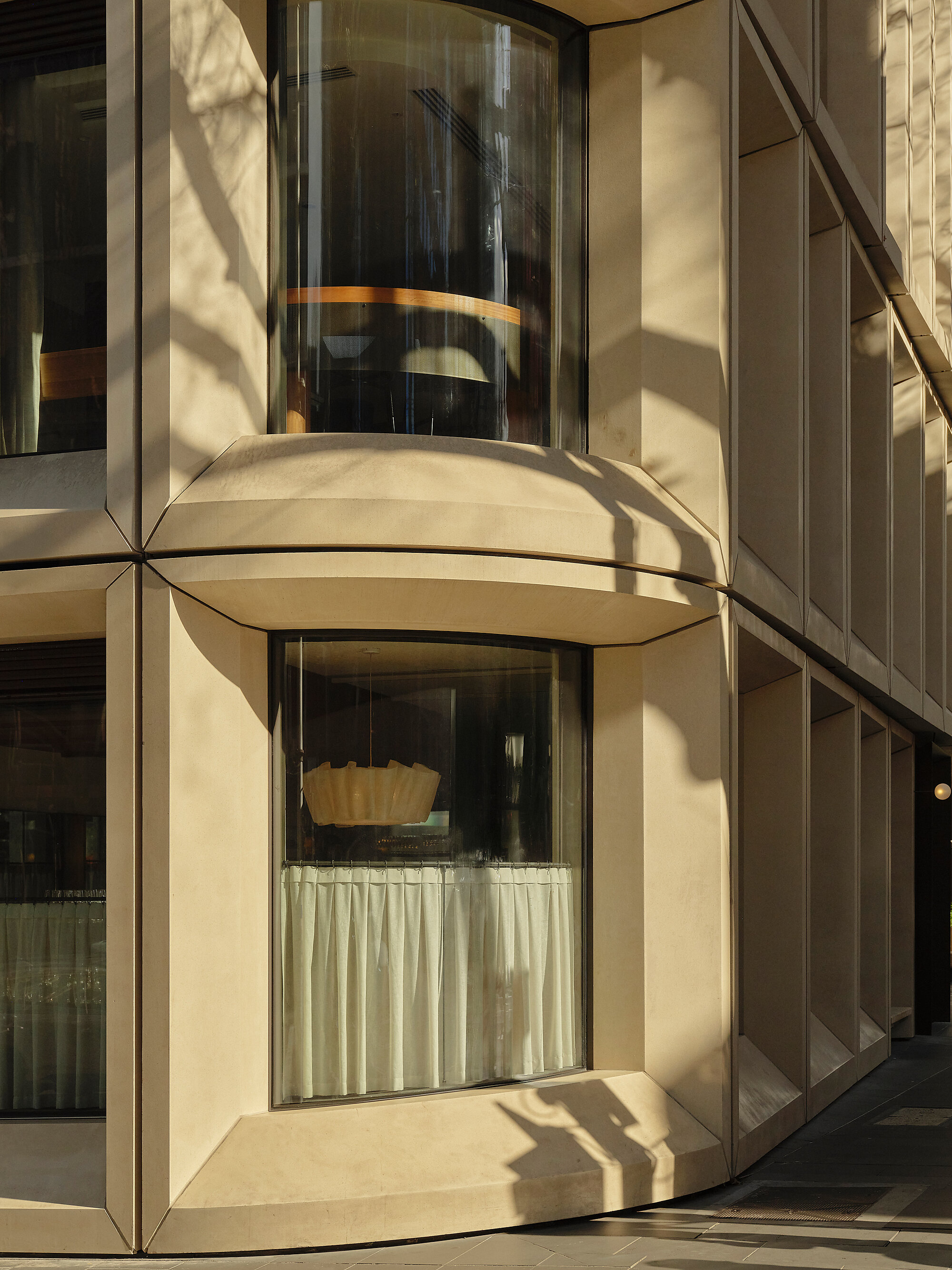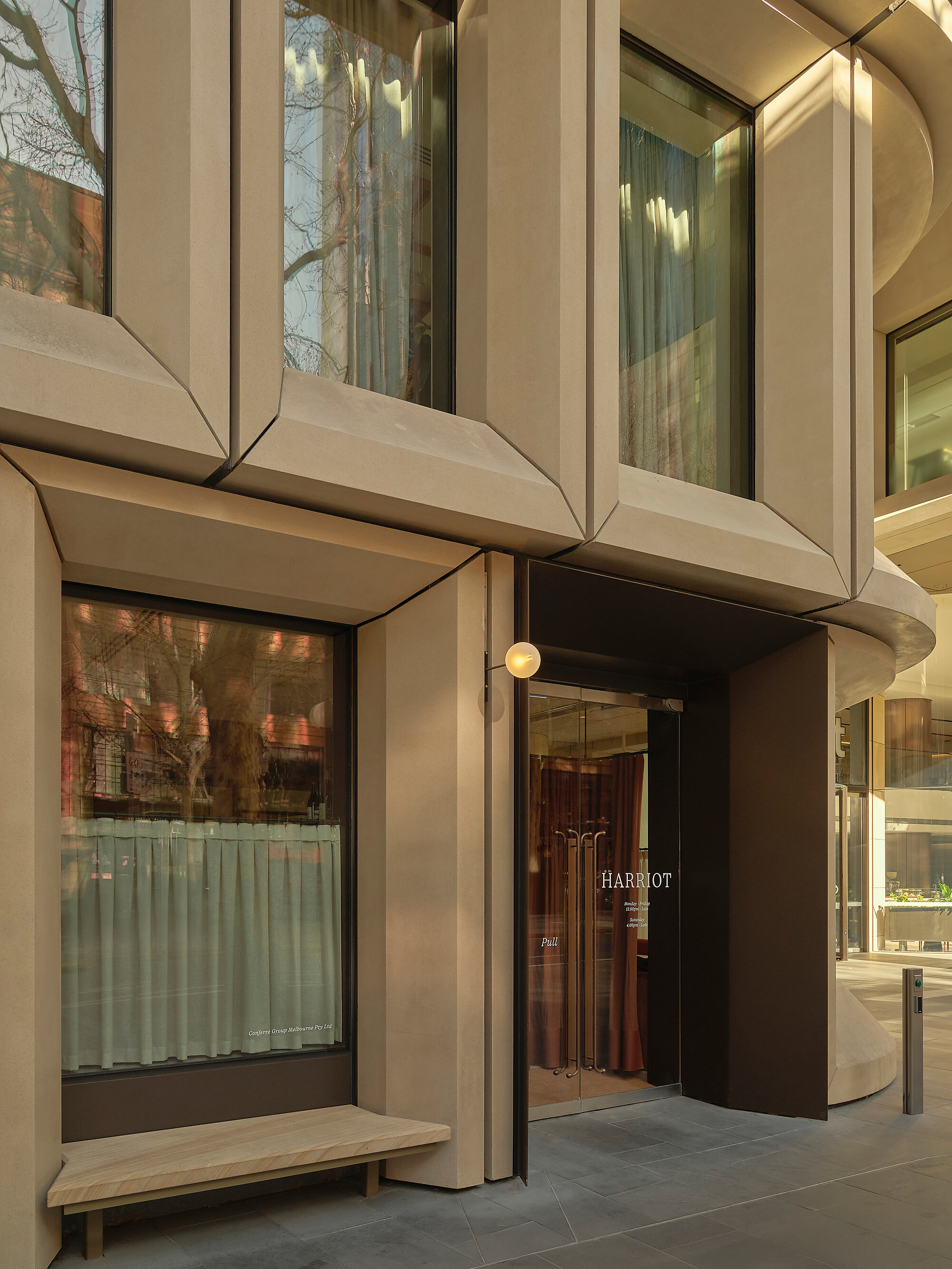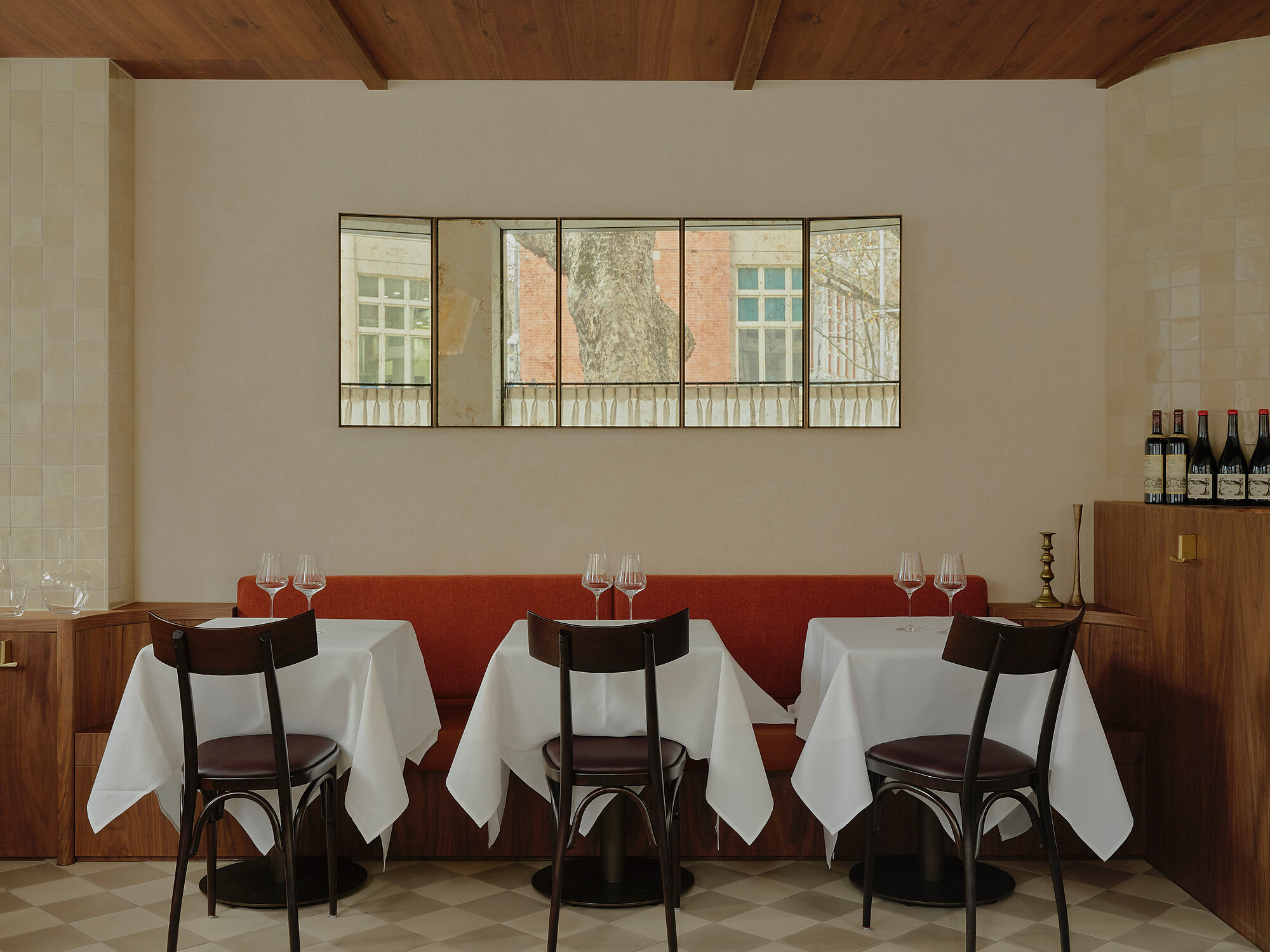Harriot
555 Collins Street, Melbourne CBD
Located at the base of Melbourne CBD’s 555 Collins Street, Harriot is an elegant, and refined dining experience by the Conferre Group, the team behind Tipo00, Osteria Ilaria, Figlia and Grana. Driven by the concept of Bistronomy – blending the casual, convivial atmosphere of a traditional bistro with the refined cuisine of a fine-dining restaurant, the design balances modern restraint with timeless materiality.
The brief called for a layered and intimate dining experience that reflects the thoughtful elegance of the menu and the precision of its service. Drawing inspiration from European wine bars and neo-bistros from Southern Europe, the palette balances raw texture and polish—integrating natural stone, textural renders, warm timber, and aged brass to create tonal depth. Curved joinery, tiered ceiling levels, and custom lighting seek to guide movement and enhance intimacy. Built-in banquette seating, Maître de and waiters’ stations further emphasise spatial flow and create intimate dining areas. The result is a cohesive, textural environment that feels grounded and elevated—a subtle backdrop that allows the food, wine and service to be the hero.
Construction by Westmark Building Group
Photography by Sean Fennessy
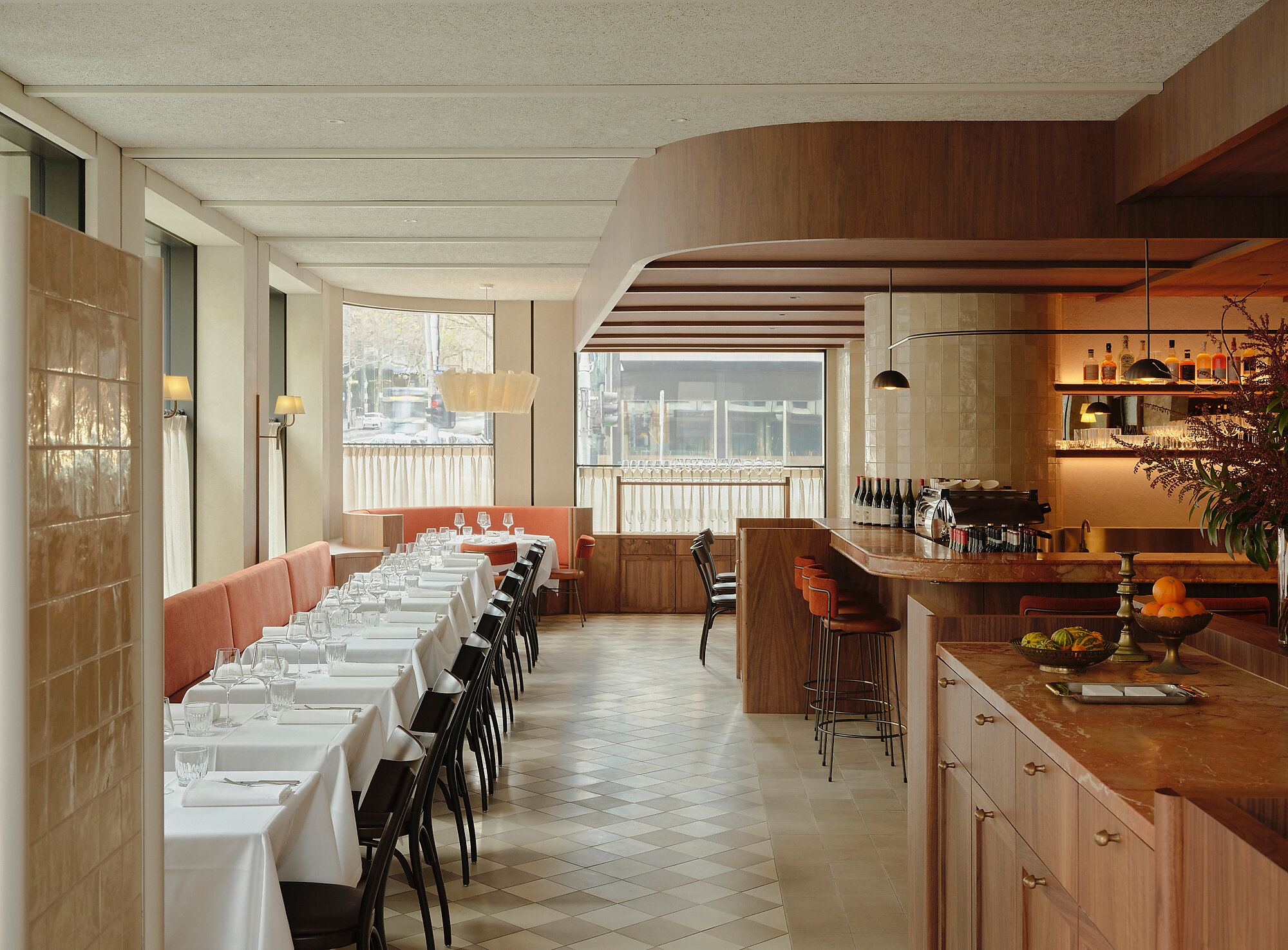
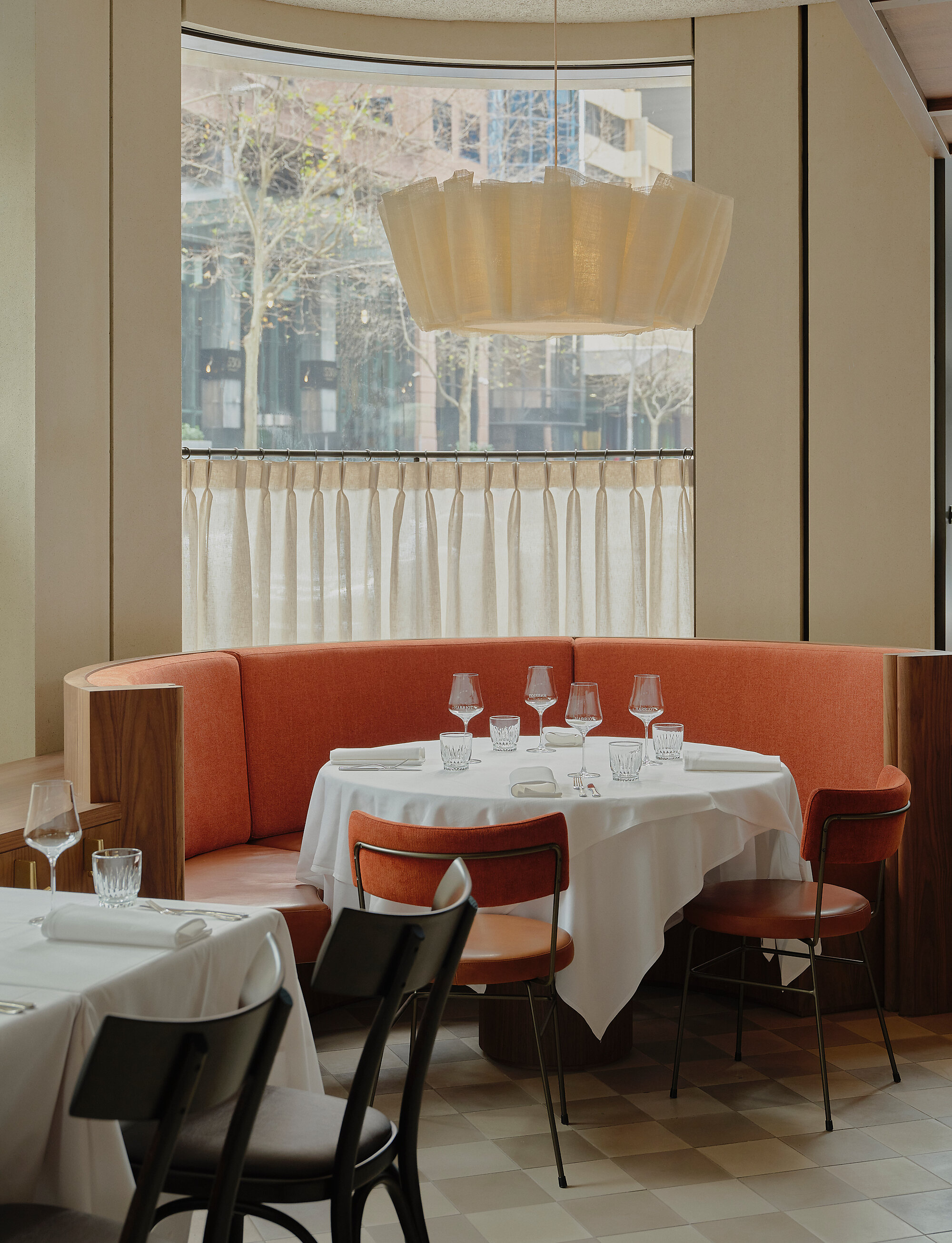
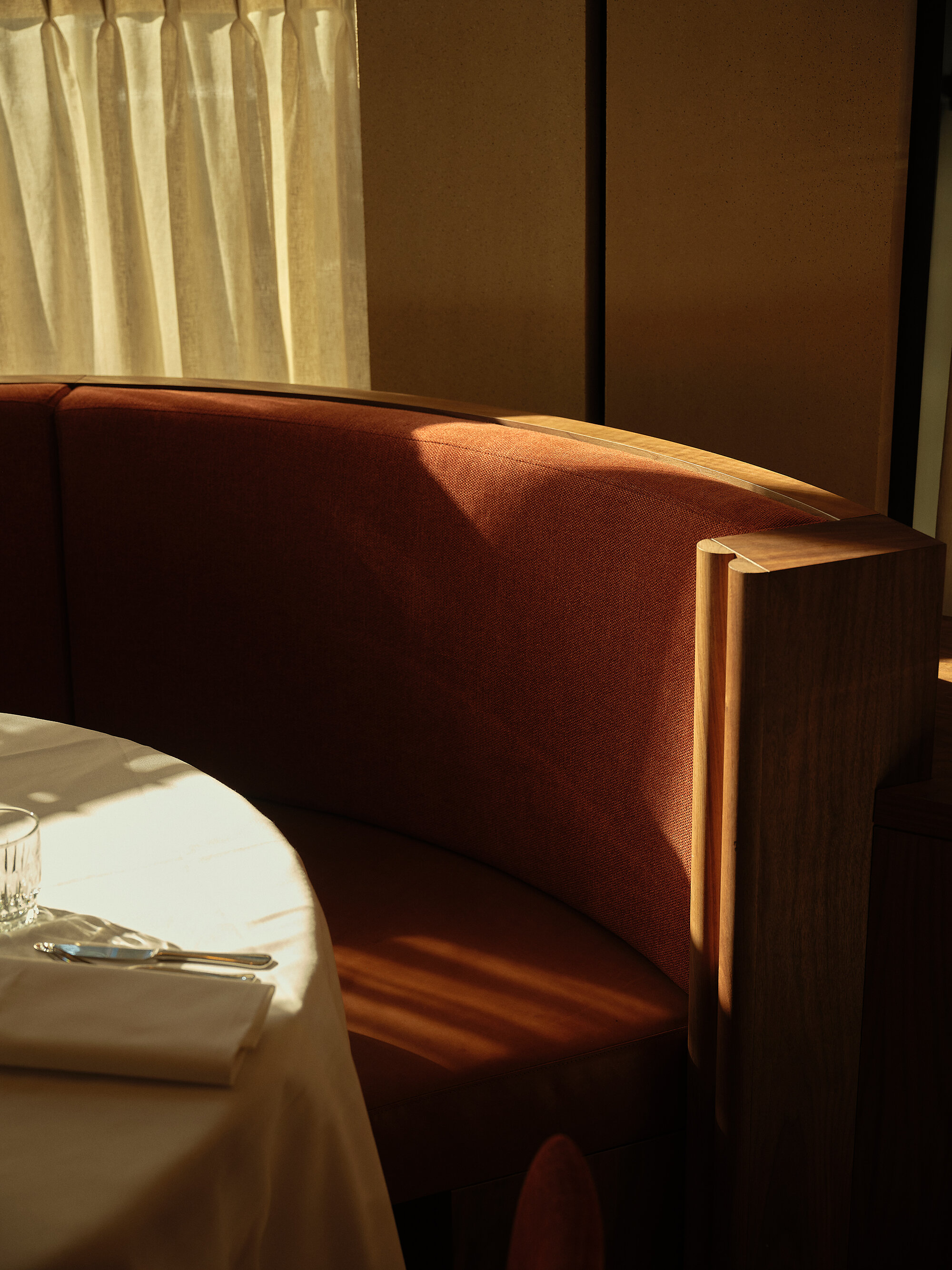
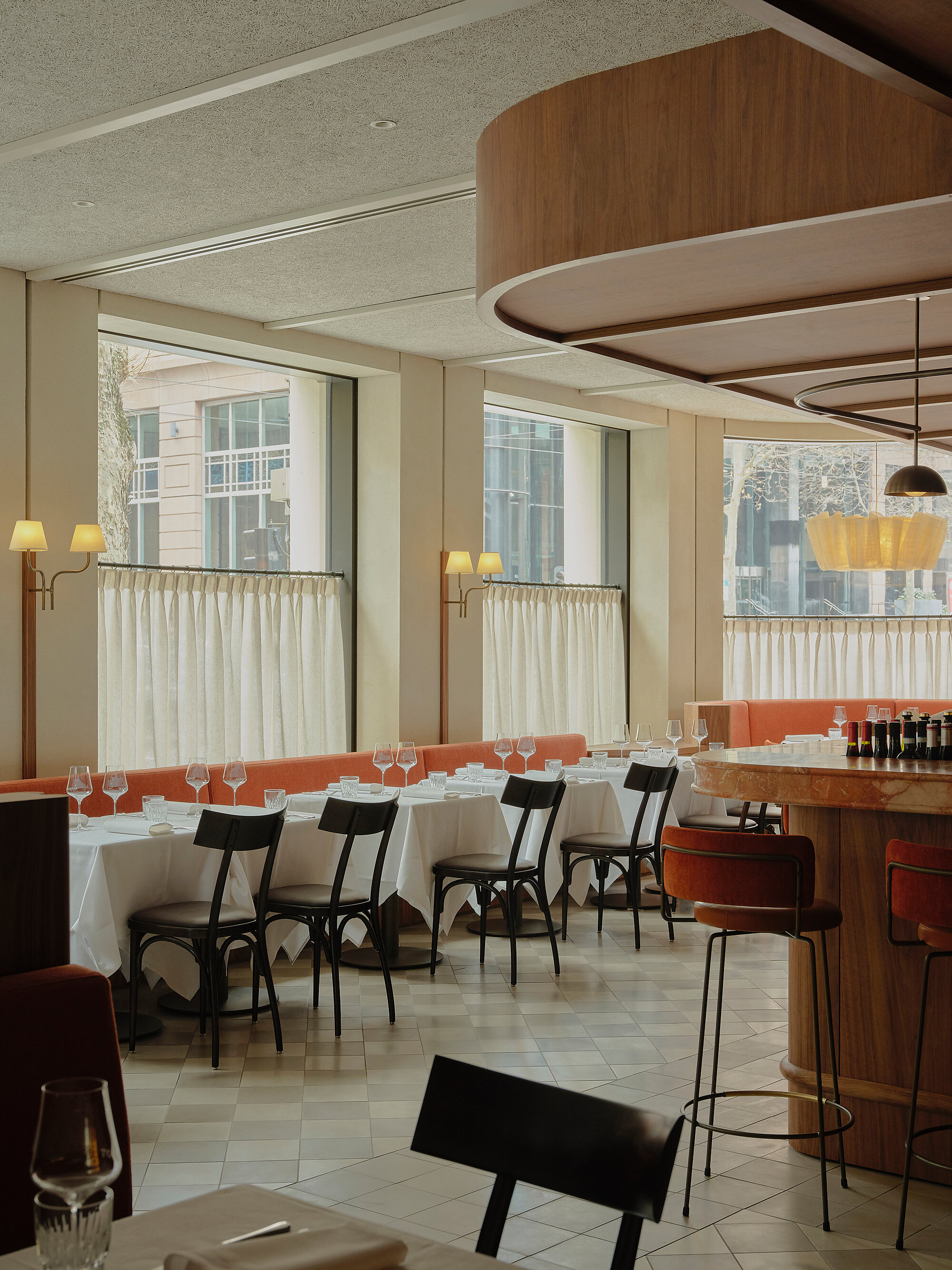
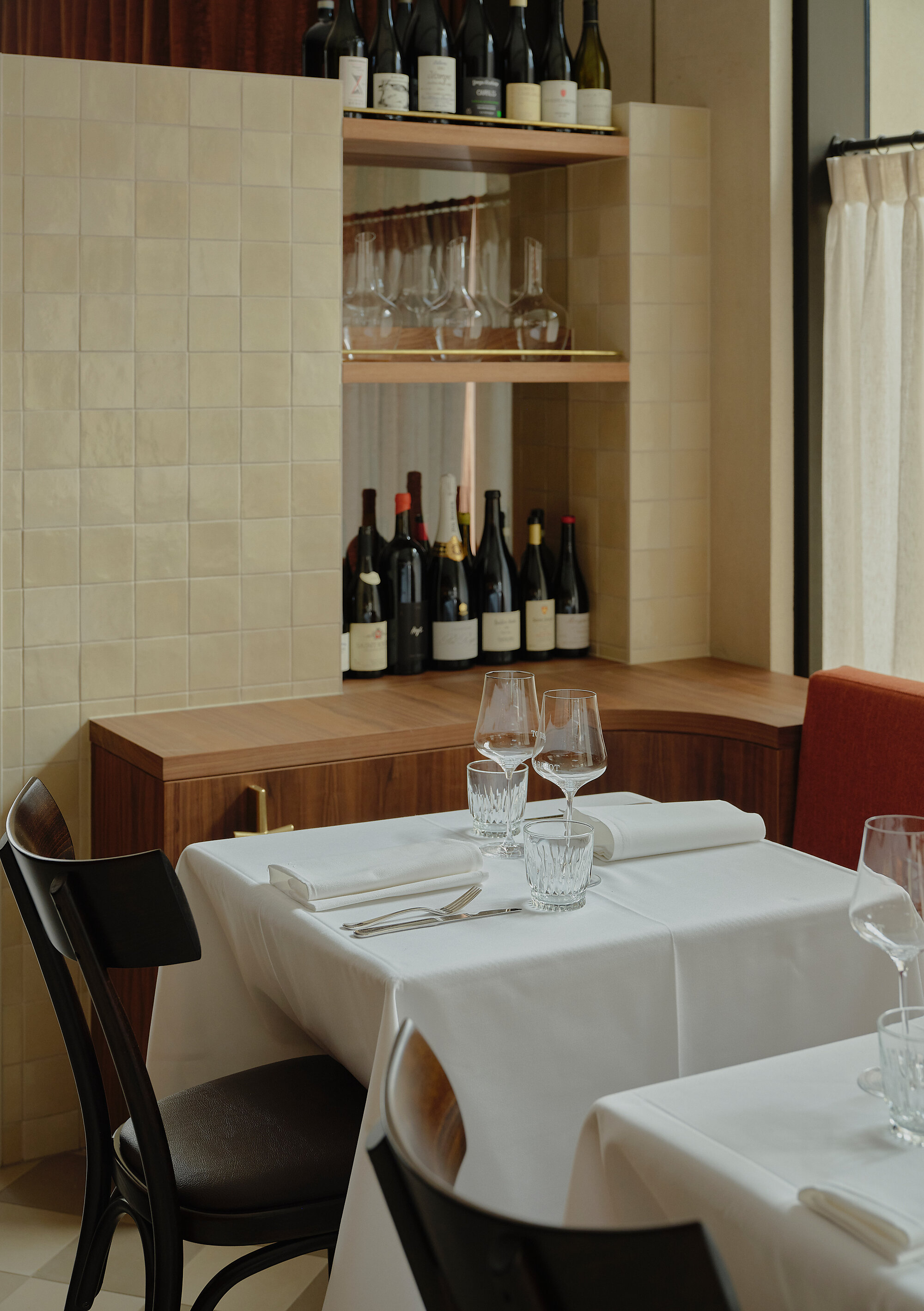
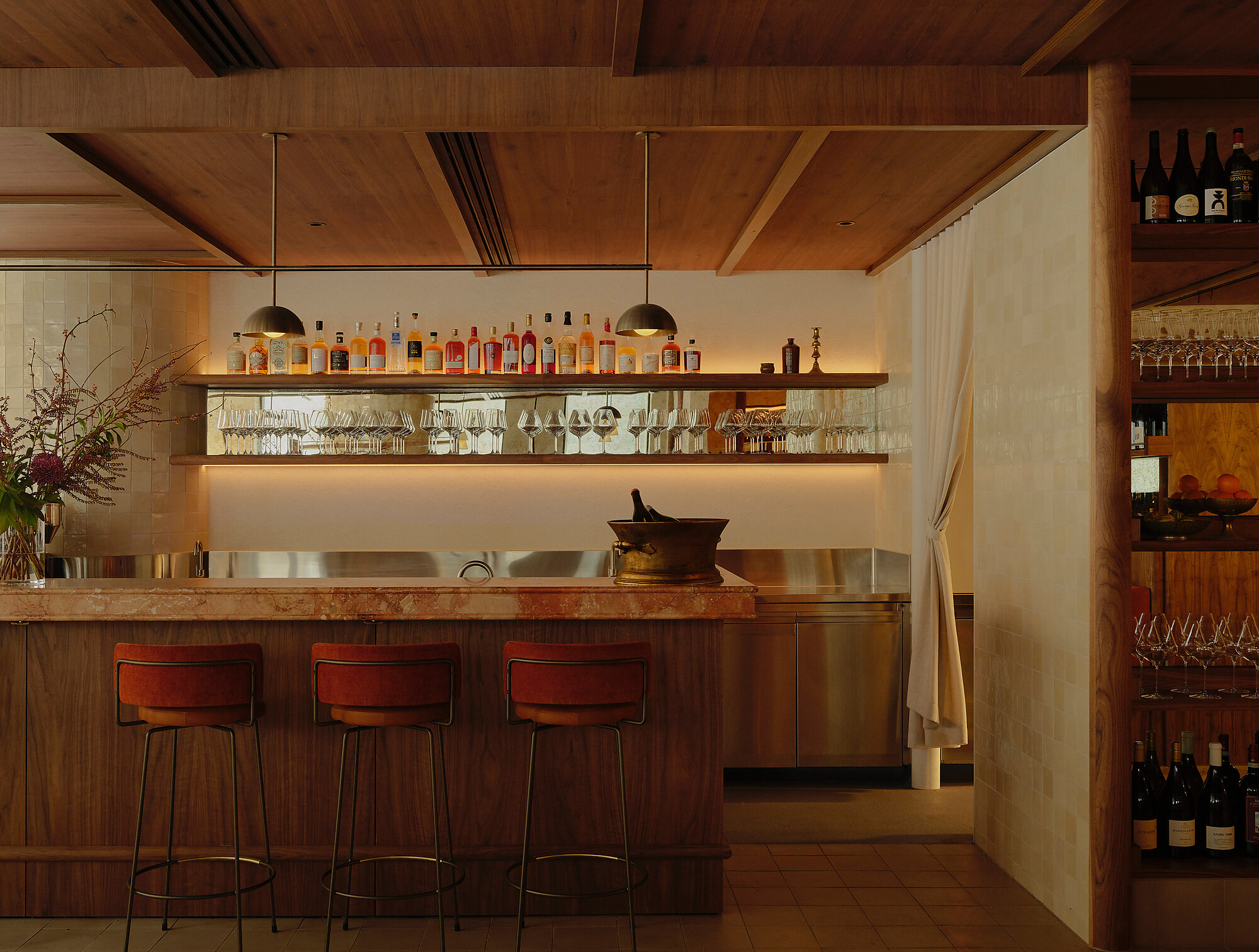
Harriot’s design is carefully attuned to its offering—a refined, ingredient-led dining experience by head chef James Kelly (ex-Embla and Lyle’s London) and his team. Intimate lighting and layered textures create a calm, immersive atmosphere that encourages slow dining and return visits. Operationally, the space is highly efficient, with a generous semi-open kitchen, integrated storage, and logical circulation supporting fluid service. Built-in banquettes and thoughtful zoning allow for varied dining styles without compromising ambience. Responding to its location at the base of an office building, the use of traditional café curtains invites curiosity, and from within a moment of retreat from the bustle of the city.
Harriot balances elegance, efficiency, and restraint challenging the notion that impactful design must be overtly expressive. Instead, it embraces a quieter form of innovation—one rooted in conceptual depth, material honesty and sensory nuance.
